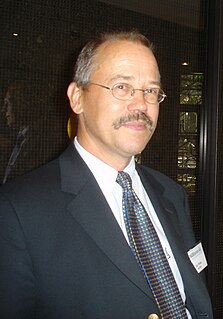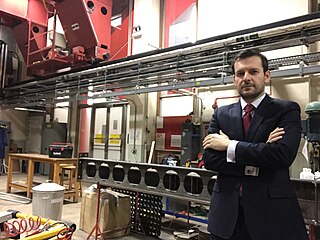
Structural engineering is a sub-discipline of civil engineering in which structural engineers are trained to design the 'bones and muscles' that create the form and shape of man-made structures. Structural engineers also must understand and calculate the stability, strength, rigidity and earthquake-susceptibility of built structures for buildings and nonbuilding structures. The structural designs are integrated with those of other designers such as architects and building services engineer and often supervise the construction of projects by contractors on site. They can also be involved in the design of machinery, medical equipment, and vehicles where structural integrity affects functioning and safety. See glossary of structural engineering.

Naval architecture, or naval engineering, is an engineering discipline incorporating elements of mechanical, electrical, electronic, software and safety engineering as applied to the engineering design process, shipbuilding, maintenance, and operation of marine vessels and structures. Naval architecture involves basic and applied research, design, development, design evaluation (classification) and calculations during all stages of the life of a marine vehicle. Preliminary design of the vessel, its detailed design, construction, trials, operation and maintenance, launching and dry-docking are the main activities involved. Ship design calculations are also required for ships being modified. Naval architecture also involves formulation of safety regulations and damage-control rules and the approval and certification of ship designs to meet statutory and non-statutory requirements.

An icebreaker is a special-purpose ship or boat designed to move and navigate through ice-covered waters, and provide safe waterways for other boats and ships. Although the term usually refers to ice-breaking ships, it may also refer to smaller vessels, such as the icebreaking boats that were once used on the canals of the United Kingdom.

A structural insulated panel, or structural insulating panel, (SIP), is a form of sandwich panel used in the construction industry.

Earthquake engineering is an interdisciplinary branch of engineering that designs and analyzes structures, such as buildings and bridges, with earthquakes in mind. Its overall goal is to make such structures more resistant to earthquakes. An earthquake engineer aims to construct structures that will not be damaged in minor shaking and will avoid serious damage or collapse in a major earthquake. Earthquake engineering is the scientific field concerned with protecting society, the natural environment, and the man-made environment from earthquakes by limiting the seismic risk to socio-economically acceptable levels. Traditionally, it has been narrowly defined as the study of the behavior of structures and geo-structures subject to seismic loading; it is considered as a subset of structural engineering, geotechnical engineering, mechanical engineering, chemical engineering, applied physics, etc. However, the tremendous costs experienced in recent earthquakes have led to an expansion of its scope to encompass disciplines from the wider field of civil engineering, mechanical engineering, nuclear engineering, and from the social sciences, especially sociology, political science, economics, and finance.

A steel plate shear wall (SPSW) consists of steel infill plates bounded by boundary elements.
Bruce Russell Ellingwood is an American civil engineer and a Professor of Civil and Environmental Engineering at the Colorado State University.

The history of structural engineering dates back to at least 2700 BC when the step pyramid for Pharaoh Djoser was built by Imhotep, the first architect in history known by name. Pyramids were the most common major structures built by ancient civilizations because it is a structural form which is inherently stable and can be almost infinitely scaled.
Sandwich Plate System (SPS) is the name of a patented structural composite material comprising two metal plates bonded with an elastomer core. SPS was created in partnership with chemical manufacturer BASF incorporating Elastocore ® as the core material. The SPS material is a direct replacement for stiffened steel and reinforced concrete in heavy engineering projects.
The Ship and Offshore Structural Mechanics Laboratory (SSML) is a laboratory in the Department of Naval Architecture and Ocean Engineering of Pusan National University. The SSML develops methods useful for strength analysis and structural design of marine structures. The methods developed should be helpful for achievement of high performance of the structural system. The Laboratory has the facilities for numerical and experimental studies. This includes mechanical testing equipment and high-speed computers with non-linear finite element programmes.

The Department of Civil and Environmental Engineering is the academic department at Imperial College London dedicated to civil engineering. It is located at the South Kensington Campus in London, along Imperial College Road. The department is currently a part of the college's Faculty of Engineering, which was formed in 2001 when Imperial College restructured. The department has consistently ranked within the top five on the QS World University Rankings in recent years.

Morrison Hershfield is an employee-owned professional services firm providing engineering and management consulting services in the areas of energy and industrial, buildings, technology and telecom, transportation, environment, water and wastewater, and land development. The firm has delivered vertical and horizontal infrastructure projects from 16 offices across North America.

Kaj Antero Riska is a naval architect and engineer with expertise in ice and arctic technology. He has written various publications about ice-going ships and icebreaker design, ice loads and ice management for arctic offshore floating platforms. He is now working at Total S.A. as Senior Ice Engineer.
Luís Alberto Proença Simões da Silva also known as Luis Simoes da Silva, is a Professor of Structural Mechanics at the Department of Civil Engineering of the Faculty of Science and Technology at the University of Coimbra in Portugal. He is head of the Civil Engineering Department and director of Institute for Sustainability and Innovation in Structural Engineering research centre financed by FCT evaluated in 2014 with excellent. He is also president of cmm.

Michael John Nigel Priestley was a New Zealand earthquake engineer. He made significant contributions to the design and retrofit of concrete structures, and developed the first displacement-based method of seismic design.

Medhat Haroun was an Egyptian-American expert on earthquake engineering. He wrote more than 300 technical papers and received the Charles Martin Duke Lifeline Earthquake Engineering Award (2006) and the Walter Huber Civil Engineering Research Prize (1992) from the American Society of Civil Engineers.
Ian Jordaan is a Canadian civil engineer who has made contributions to the design of offshore structures for harsh, cold environments. He is a professor emeritus and university research professor in the Faculty of Engineering and Applied Science at Memorial University of Newfoundland. He is also president of the consulting company Ian Jordaan and Associates.

The Advanced Structures and Composites Center is an independent research unit at the University of Maine that provides research, education, and economic development encompassing material sciences, manufacturing and engineering of composites and structures.

Konstantinos Daniel Tsavdaridis is a Professor at the School of Civil Engineering of the University of Leeds, known for his work on lightweight steel and steel-concrete composite structures and particularly for the design of novel perforated beams and tall buildings.

Azer Arastunoglu Kasimzade is a doctor of Technical Science (D.Sc.), professor in the Faculty of Engineering, Ondokuz Mayis University (OMU)














